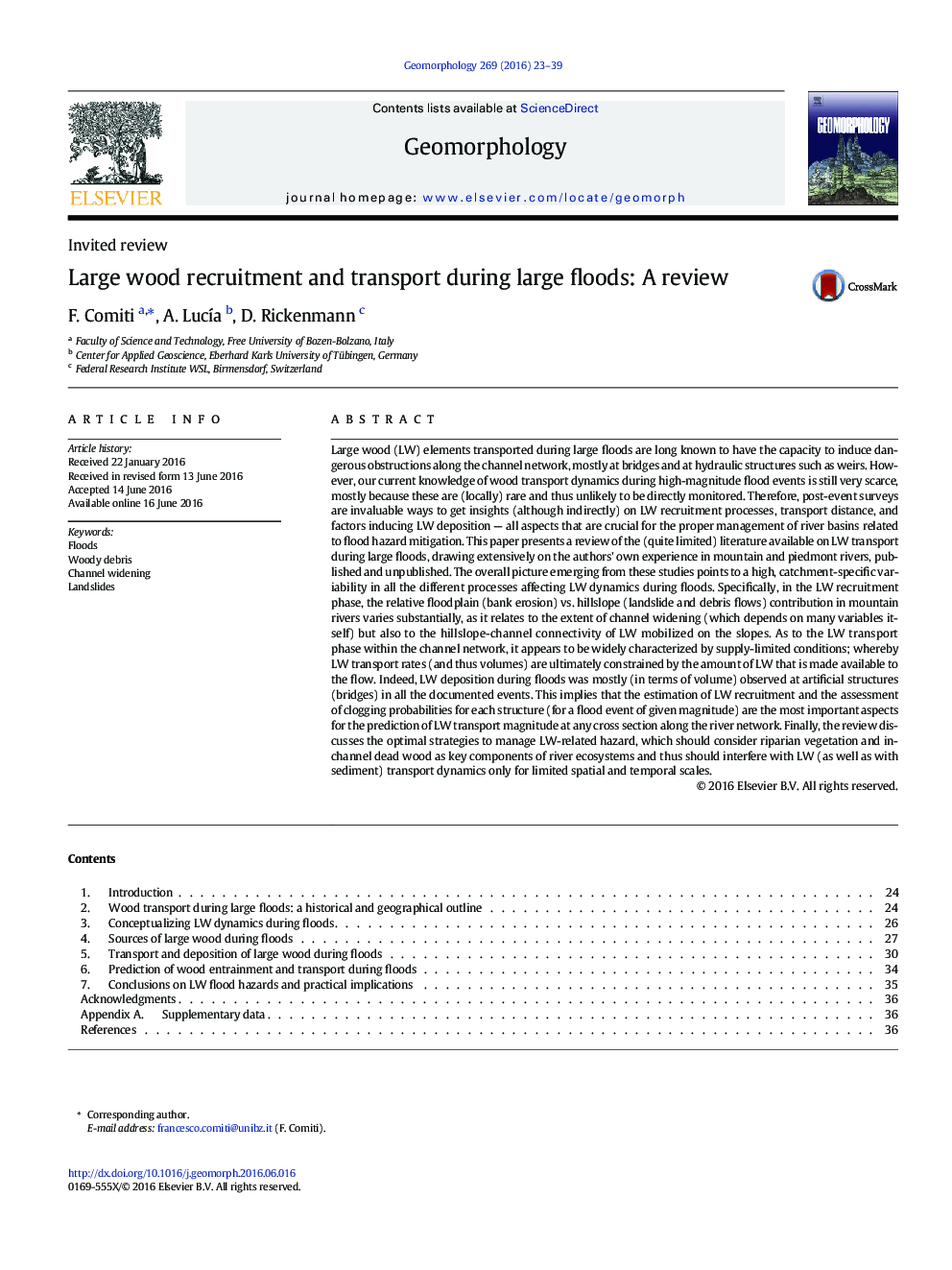| کد مقاله | کد نشریه | سال انتشار | مقاله انگلیسی | نسخه تمام متن |
|---|---|---|---|---|
| 4683928 | 1635380 | 2016 | 17 صفحه PDF | دانلود رایگان |
• Limited quantitative data available on transport of large wood during large floods
• Relevant wood transport takes place in mountain rivers at infrequent floods only.
• Fluvial corridors and hillslopes concur to wood recruitment at varying proportions.
• Maximum wood transport volumes per unit of basin area decrease with basin size.
• Effective trapping structures and ad-hoc bridge design reduce wood-related risk.
Large wood (LW) elements transported during large floods are long known to have the capacity to induce dangerous obstructions along the channel network, mostly at bridges and at hydraulic structures such as weirs. However, our current knowledge of wood transport dynamics during high-magnitude flood events is still very scarce, mostly because these are (locally) rare and thus unlikely to be directly monitored. Therefore, post-event surveys are invaluable ways to get insights (although indirectly) on LW recruitment processes, transport distance, and factors inducing LW deposition — all aspects that are crucial for the proper management of river basins related to flood hazard mitigation. This paper presents a review of the (quite limited) literature available on LW transport during large floods, drawing extensively on the authors' own experience in mountain and piedmont rivers, published and unpublished. The overall picture emerging from these studies points to a high, catchment-specific variability in all the different processes affecting LW dynamics during floods. Specifically, in the LW recruitment phase, the relative floodplain (bank erosion) vs. hillslope (landslide and debris flows) contribution in mountain rivers varies substantially, as it relates to the extent of channel widening (which depends on many variables itself) but also to the hillslope-channel connectivity of LW mobilized on the slopes. As to the LW transport phase within the channel network, it appears to be widely characterized by supply-limited conditions; whereby LW transport rates (and thus volumes) are ultimately constrained by the amount of LW that is made available to the flow. Indeed, LW deposition during floods was mostly (in terms of volume) observed at artificial structures (bridges) in all the documented events. This implies that the estimation of LW recruitment and the assessment of clogging probabilities for each structure (for a flood event of given magnitude) are the most important aspects for the prediction of LW transport magnitude at any cross section along the river network. Finally, the review discusses the optimal strategies to manage LW-related hazard, which should consider riparian vegetation and in-channel dead wood as key components of river ecosystems and thus should interfere with LW (as well as with sediment) transport dynamics only for limited spatial and temporal scales.
Journal: Geomorphology - Volume 269, 15 September 2016, Pages 23–39
